Called Out of Darkness Read online
Page 14
The clouds quickly closed over the statue; then broke and revealed the statue again. How many times this happened I don’t remember. I do remember a kind of delirium, a kind of joy. I’d made it to Rio, I’d made it to the statue of legend, and the physical world contrived to render the moment infinitely more beautiful than I’d imagined it would be. I didn’t acknowledge faith in these moments at the foot of the statue. But something greater than a creedal formulation took hold of me, a sense that this Lord of Lords belonged to C a l l e d O u t o f D a r k n e s s me in all His beauty and grandeur. He belonged to me in the grandeur of this symbol if He did not belong to me in any other way.
There was a sadness to this happiness, an undercurrent of acceptance: you can’t have faith but you have this. The Lord doesn’t disappear when you turn away from Him; He remains, acknowledged in myriad forms, and even in the miracle of the ever shifting clouds themselves. The Lord is with you; no, He’s not real. No, He’s just a symbol. But this is such a potent symbol that your whole life is suddenly pervaded with Him. You belong to Him in the guise of art, and sensing something greater beyond it, though you haven’t the courage or the ability yet to reach for what that is. Lord, surely what I felt in that moment was love. Faith, no. But love? Yes, love.
After visiting many gorgeous colonial churches in Rio, and viewing some of the most magnificent scenery in the world, we decided to wander around Brazil. For no particularly good reason we ended in Salvador da Bahia, a city that had been described to us by our friends in Rio. And there we found two of the most intricate colonial churches that we were ever to see.
But to describe the impact of one of the the last churches I visited—to describe the way this pilgrimage to Brazil ended—I have to flash back to an afternoon in San Francisco many years before.
At the time, Stan and I were shopping in a store on Mission Street—the Mission Gift Shop—that sold religious statues, along with little white Communion dresses, and jewelry, largely for the Latin American families of the city. Mission 1 6 5
Street was their world. I was looking for religious collectibles. I wanted to have them around me. I wasn’t sure why. In this shop, I discovered an outrageous statue which at once riveted me; and I bought it, not even noticing what it cost.
The statue is about two feet high. It is a double statue, actually, because it includes Christ nailed to His cross, and beside Him the figure of St. Francis of Assisi, reaching up to embrace the Crucified Lord. But what makes the statue unique is that Our Lord is also reaching down from the cross to embrace Francis. Our Lord’s left arm is freed from the cross and with this left arm, He tenderly holds the devoted saint.
This statue was made in Spain. It is hyperrealistic. Blood flows from Our Lord’s wounds. His face is gaunt, stained with blood from His crown of thorns, and the blood from the crown flows down his shoulders onto His chest. He is looking down intently at the head of Francis who appears to be staring at the bloody wound in Our Lord’s side. Francis bears the wounds of the Stigmata in this statue. That is, Francis, too, has the wounds of the nails in his hands and in his feet. Francis was the first mystic ever to be granted the gift of the Stigmata. I knew this from childhood devotion to Francis. So this image made sense to me. What was new was the depiction of Our Lord reaching down to embrace Francis in this tender way.
The figures are graceful and delicate and they have dark skin.
The Lord’s face is filled with love.
Francis, in this double statue, is in a brown robe—the C a l l e d O u t o f D a r k n e s s habit of his Franciscan Order—with a rope tied around his waist, and a wooden rosary hangs from this rope. Francis is barefoot. One wounded foot rests on a world globe without continents, a simple sphere of blue.
There are touching bits of ornamentation on these two figures—painted flowers on the loincloth of Our Lord, gold curlicues on the robe of Francis—an ornamentation that lifts them out of the bloody reality of the moment and renders them timeless and the property of all those who seek to possess the meaning of the union of Christ and the saint. An open book rests on the base of the statues, with words in Latin:
Qui-non Renuntiat Omnibus Que Possidet Non Fotes Meus Esse Disipulus
LMC XVII
Never had I seen a statue that so reflected the disparate elements of my earlier faith. Here was the sensuality and excess and the spirituality which I had so loved. I kept the statue on my desk as I wrote my “atheistic novels” and I defended it now and then against people who were understandably shocked by it, by its lurid embodiment of the suffering of the two figures.
Once I was even photographed holding the statue, and this photograph appeared in the Village Voice. A deeper attachment to the statue involved my unresolved memory of the Catholic schoolgirl who had once prayed to Francis and to the Lord, who had once read excitedly the life of Francis, and who had once asked the Lord 1 6 7
if He would not grant her the Stigmata—the visible signs of His wounds. I had prayed for that, yes. I had prayed for a mystical union with Our Lord, knowing full well that there is nothing one can do to “obtain” a mystical union with the Lord. A mystical union must be offered by God. And what greater visible sign of it could there be other than the wounds of the Stigmata?
Flash forward now to Salvador da Bahia, and a group of us walking up the steep hillside street to see two sensational colonial churches.
We turn in to one of these, and enter the inevitable captivating gloom, replete with the flicker of candles, the familiar envelope of lingering incense, and sumptuous detail. And there on the distant altar, giant sized, is this very double statue, in exactly the same configuration. Francis embracing the crucified Lord. The Lord embracing Francis with His left arm.
I felt a great shock.
I felt I had journeyed all this way to Brazil and into the interior of Brazil to find this potent double image of the love of God. It was as if someone were whispering to me: This is not some statue you bought in a shop, and put among your collectibles. This is a figure of the love of Jesus Christ that is waiting for you. This is the mystery of the Incarnation. This is the Lord bridging the gulf between God and humankind. This is the Lord, in the midst of His atoning suffering, reaching out for . . . you. I went back to the hotel, became sick with a blinding migraine, and did not go out again in Brazil. In the next few years, if not before, I became convinced C a l l e d O u t o f D a r k n e s s that I was being pursued by the Lord. I did not think literally “He is pursuing me.” After all, He wasn’t supposed to exist. He was supposed to be an idea. He was “located” in nostalgia. I thought something is pursuing me. Something is happening.
I went to Italy again in 1998, and as before I visited church after church, returning again to Assisi, and visiting an ancient monastery where there was a thirteenth-century crucifix that drew me by its simplicity and its purity. While I was there, the feeling of being pursued continued.
One morning we went to a church in Rome specifically to see Bernini’s great statue of St. Teresa of Avila because my son, Christopher, had studied this in school and wanted to see it firsthand. I put out of my mind, uncomfortably, my old love for St. Teresa, and my own special feelings about her ecstasy as represented so famously in this statue. Did anyone need to know I had once dreamed of entering the Carmelite nuns because of this great saint, that I had once lugged her autobiography around with me, struggling to read a few pages?
What would I do in this church? Well, I would look at the statue, and ask if there were any religious articles for sale, and I would buy as many of them as I could possibly carry. Suddenly, while we were there, the priest came out with the altar boy and started to say Mass. Why Mass was being said at that time—very late in the morning—I had no idea. But there it was, the Mass being said in a partially empty church, in spite of a few milling tourists. On our last day in Rome, we happened into St. Peter’s 1 6 9
Basilica late in the evening. We wandered over the vast intricate marble floors. Then we realized Mass w
as being said, deep in the sanctuary.
Two of our party, who were Catholic, went up to hear Mass and I went with them. The music of the choir was transporting.
I had an overwhelming desire to go to Communion. But I could not do this. My two friends went to Communion and I sat there in the pew crying because I felt I could not do it. I was crushed and alone, and crying, in the heart of Christendom. I knew the rules too well to simply get up and approach the altar rail. And I did not want to offend my friends, who knew I was not a practicing Catholic, but even if they had not been there, I would not have gone. The pain of this moment was unforgettable. I felt I was not acknowledging something that I knew to be true; God was there. God was everywhere. God was God.
At home that year, it seemed that no matter when or how I turned on the television, images of the Mass flashed onto the screen. Mother Angelica had by that time created the great Catholic network, EWTN, and I was dimly aware of this, in spite of my aversion to all things Catholic; and in spite of that aversion, I found myself drawn to watching the Mass on EWTN.
Again and again I turned on the television to see the priest lifting the host at the moment of Consecration. I’d stop, sit down, and watch. This seemed to go well beyond coincidence, but it may well have been coincidence. Whatever the case, EWTN during those months became a constant C a l l e d O u t o f D a r k n e s s reminder to me of my lost faith. Mother Angelica—whom, in my ignorance then, I regarded as an amusing little nun—
was the Apostle who reached me during that year. All this while, I continued to buy religious statues, to surround myself with the saints who’d once been the mentors of my childhood, and I continued to give support to the parish though I never set foot in the church.
The Vampire Armand and Vittorio, The Vampire are the two novels I wrote during the last year of my official atheism. Both reflect the conflict I was experiencing—the longing for reconciliation with God, and the inevitable despair that underscored the seeming impossibility of it. But I should add, before I leave this chapter on the pilgrimages, on the pursuit, on the conflict—that no novel I wrote better reflects my longing for God than Memnoch the Devil, written several years before, in which my hero, the vampire Lestat, actually meets “God Incarnate” and his rebellious angel Memnoch, and is offered an opportunity to become part of the economy of salvation. Lestat rejects the offer, and flees from the purgatorial realm where souls prepare for acceptance into Heaven. But he carries out of this realm and back into the real world a particular article which has come into his hands earlier in the novel, on the road to Golgotha, where Lestat encountered Christ carrying His cross. The article is the legendary veil of Veronica, the veil that supposedly bears the image of Christ’s blood-stained face.
The novel ends on a note of ambiguity: Were Lestat’s visions of God and the Devil real? Or was Lestat the play-1 7 1 thing of capricious spirits for whom Christianity is but one form of game? What is unambiguous at the close of the novel is the existence of Veronica’s veil.
At the time I wrote the book, I saw the veil as causing confusion in the “real world” to which Lestat returned, evoking devotion and piety from a range of characters, whose actions could be viewed as irrational and hysterical at the worst.
I now feel differently about the veil in that novel. It is not the character of Lestat who rescued it from Time and brought it into the modern world. It is the author who grabbed hold of it, and fled from moral confusion in the novel with the Face of Christ on the veil in her hands. It is the author who held it up for all to see, and then backed away, deep into the fictional matrix, leaving its meaning unresolved.
Now it’s time to speak of my conversion, my return to faith, my return to the loving—and eternally outstretched—
arms of the Lord.
8
A s I ’ve e x p l a i n e d e a r l i e r, my faith in atheism was cracking. I went through the motions of being a conscientious atheist, trying to live without religion, but in my heart of hearts, I was losing faith in the “nothingness,” losing faith in “the absurd.”
Understand, we were living contentedly in New Orleans, among secular and Catholic friends and family. There was no pressure from anyone to do anything about this issue, this matter of faith. There was no zealot at the door or at the coffee table pounding away about how I should come home to my church. Far from it. To repeat, I was surrounded by tolerant Catholics, and Catholics who were no longer shunning those who didn’t conform.
And I’d noticed other things about these Catholics. Minor things, I should say, but they are worth noting. These 1 7 3
Catholics did not always stay married for life; they got annulments; and they remarried with the approval of their church. And these Catholics were not having thirteen children like my great-grandmother Josephine Becker Curry, nor were they having nine children like my grandmother Bertha Curry O’Brien, nor were they even having six or seven children. They were Catholics through and through but they had smaller families, and that indicated to me that there had been changes within the Catholic Church of which I wasn’t aware. These observations weren’t a determining factor in the return of my faith. But they did suggest that the church of my childhood was somehow more inclusive and accepting than it had been. Not only was the Latin gone, perhaps a certain rigid attitude towards sex was gone as well. I didn’t inquire too closely about all this. I’d asked a few questions here and there, as I’ve mentioned, but in general this aspect of things didn’t much matter.
There was a storm in my heart and soul that had little to do with other people and their decisions. I held out against God and I held out against the church because I thought I was holding out for bitter truth.
But history was telling me every day there could very well be a God. The story of the survival of the Jews told me that there could very well be a God. Everything I was reading—
and I was reading more than ever before—was telling me in a secret and insistent voice: Anne, you know there is a God. Even my time among the skeptics, present and past, sang to me—in memory—of God. In California, as I’d listened to the passionate stories of civil rights workers or war protestors, C a l l e d O u t o f D a r k n e s s I’d heard the voice of conscience, the commitment to high principles, the deep-rooted need to do “good.” No one I ever met was indifferent to conscience or to acute moral responsibility. I saw no evidence even in the most strident anti-religious talk of people who didn’t believe in something, who didn’t suffer inwardly for those beliefs. One afternoon I accosted my son, Christopher, on the staircase and demanded, “Do you believe in God?”
Here was a young man not yet twenty, brought up to believe in nothing, and in that time of life when beliefs are most easily dismissed. And Christopher, after a moment’s reflection, responded, “Yes, I believe in God.”
How could that have happened? How could our freethinking son believe in God? The creation was talking to me of God. My visceral responses to the purple evening sky, to the canopy of oak branches that sheltered our front steps, to the flowers blooming beyond garden fences—my most cherished memories of the beauty of Port-au-Prince, Haiti, or Rio de Janeiro, or Venice, Italy—all this was speaking to me of God. The music of a violin sang to me of God. The great paintings of Giotto and Rembrandt spoke to me of God. An intense study of the lives of various composers spoke to me of God. Giotto’s angels, those desperate, sobbing angels crying to Heaven as they witnessed the Crucifixion in Giotto’s painting—they cried and cried for the love of God. The world around me was filled to the brim with God. And the person of Jesus Christ—the mystery of Jesus and how He’d started a worldwide religion—this weighed on my 1 7 5
“rational” mind. Who was He really? Who had He been? Why was twentieth-century America so obsessed with Him? Twentieth-century America certainly wasn’t living in a postChristian world! Why did people flock by the thousands to the musical Jesus Christ Superstar? Why in the world did Americans become so furious over the film The Last Tempta- tion of Chri
st? Why were there plastic Jesuses on dashboards, and why was His name the most common “curse word”
I heard? Why was it the most common curse word that I myself spoke?
America appeared obsessed with Jesus Christ. Why? I mean, almost two thousand years had passed since Christ had come into the world; and a host of modern thinkers had declared that religion had no validity, or to put it more poetically: God was dead. My skeptical friends had long ago declared that religion hadn’t a particle of energy left to it. I’d agreed with them. I’d said so in my novels. Didn’t my venerable immortal Marius hold forth at length on the demise of
“revealed religion” and the marvelous opportunities for the rational world that were to follow this long overdue and ignominious death? I’d said so to anyone who asked me. I’d said so to myself. Why, religion was dying out in 1998, wasn’t it?
So why this nationwide obsession with the Son of God? What was the driving force here behind the Jesus who wouldn’t go away? The story of the Incarnation—the story of an absolute and all-powerful God who became Man to be with us—began to obsess me as something unique in the history of the ancient religions I constantly studied. C a l l e d O u t o f D a r k n e s s Of course, I’d read plenty about the ancient mystery cults, the celebrations of the dying vegetation god, and his resurrection each year in the new crops; I’d studied the goddess Isis with the child Horus in her arms—an iconic forerunner of the Virgin and the Baby Jesus which had dominated art for over fifteen hundred years. And I knew the old Catholic arguments—that these religious rituals and ideas and symbols prefigured the Lord Jesus Christ and His entry into history. I saw the logic of that. I also saw that, similar though they were, these ancient religious rituals were only vaguely like the story of the Incarnation. They did not involve the God of All Creation becoming one of us.

 Interview with the Vampire
Interview with the Vampire Christ the Lord: Out of Egypt
Christ the Lord: Out of Egypt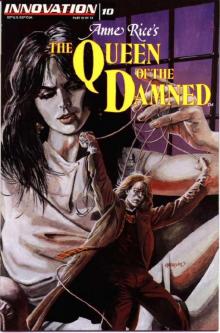 The Queen Of The Damned
The Queen Of The Damned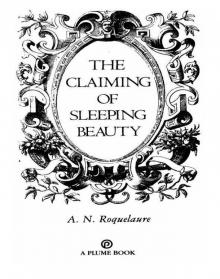 The Claiming of Sleeping Beauty
The Claiming of Sleeping Beauty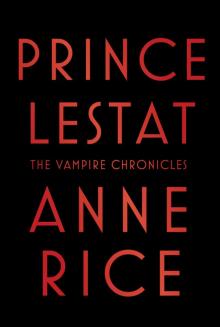 Prince Lestat
Prince Lestat The Master of Rampling Gate
The Master of Rampling Gate The Vampire Lestat
The Vampire Lestat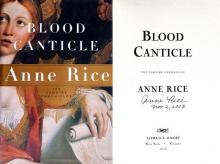 Blood Canticle
Blood Canticle Beauty's Release
Beauty's Release Pandora
Pandora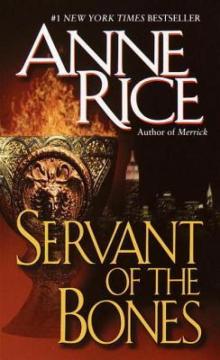 Servant of the Bones
Servant of the Bones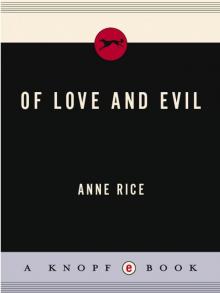 Of Love and Evil
Of Love and Evil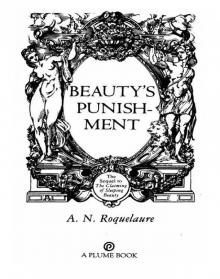 Beauty's Punishment
Beauty's Punishment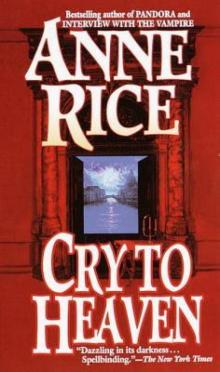 Cry to Heaven
Cry to Heaven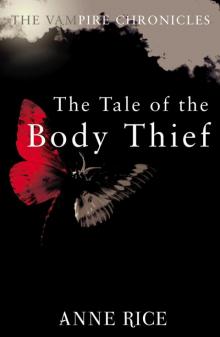 The Tale of the Body Thief
The Tale of the Body Thief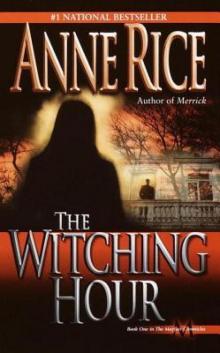 The Witching Hour
The Witching Hour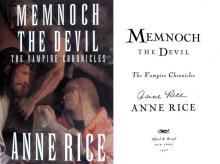 Memnoch the Devil
Memnoch the Devil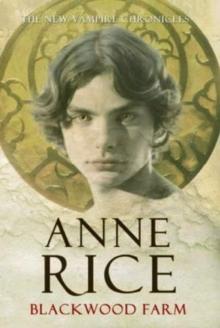 Blackwood Farm
Blackwood Farm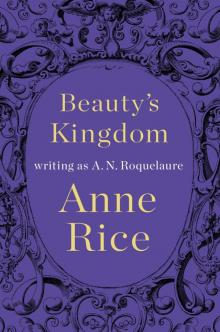 Beauty's Kingdom
Beauty's Kingdom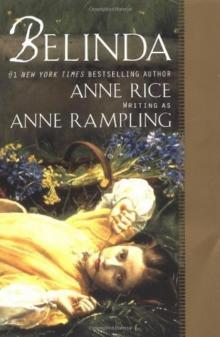 Belinda
Belinda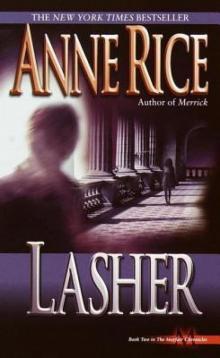 Lasher
Lasher Vittorio, the Vampire
Vittorio, the Vampire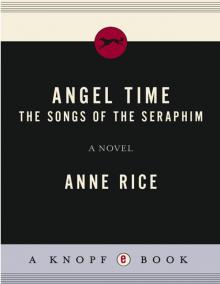 Angel Time
Angel Time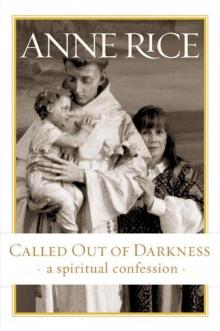 Called Out of Darkness: A Spiritual Confession
Called Out of Darkness: A Spiritual Confession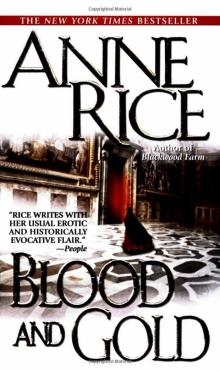 Blood And Gold
Blood And Gold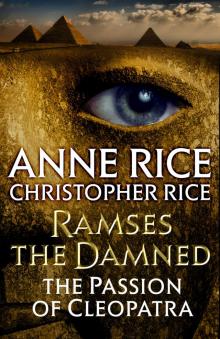 The Passion of Cleopatra
The Passion of Cleopatra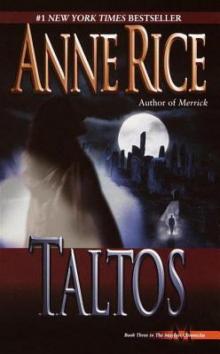 Taltos
Taltos Exit to Eden
Exit to Eden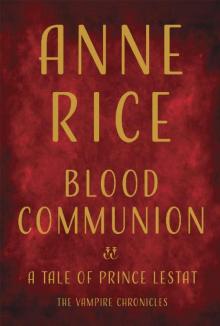 Blood Communion (The Vampire Chronicles #13)
Blood Communion (The Vampire Chronicles #13) The Wolf Gift
The Wolf Gift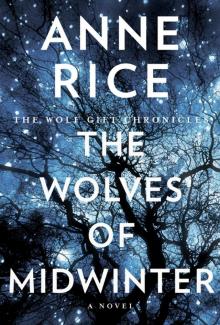 The Wolves of Midwinter
The Wolves of Midwinter Prince Lestat and the Realms of Atlantis
Prince Lestat and the Realms of Atlantis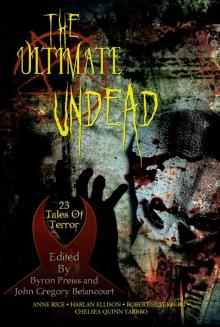 The Ultimate Undead
The Ultimate Undead The Vampire Lestat tvc-2
The Vampire Lestat tvc-2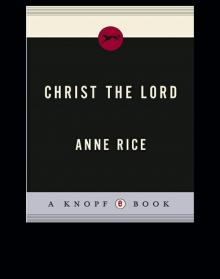 The Road to Cana
The Road to Cana Taltos lotmw-3
Taltos lotmw-3 Merrick tvc-7
Merrick tvc-7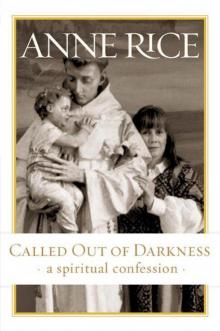 Called Out of Darkness
Called Out of Darkness Pandora - New Vampires 01
Pandora - New Vampires 01 Bllod and Gold
Bllod and Gold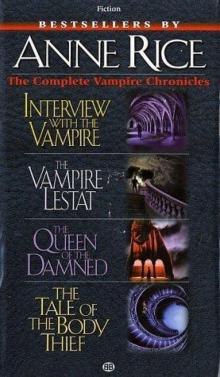 The Queen Of the Damned: Vampire Chronicles
The Queen Of the Damned: Vampire Chronicles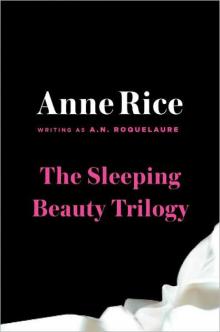 The Sleeping Beauty Trilogy
The Sleeping Beauty Trilogy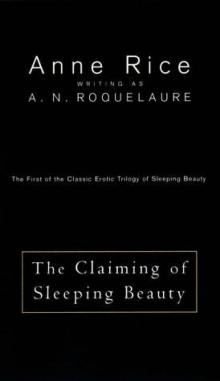 The Claiming of Sleeping Beauty b-1
The Claiming of Sleeping Beauty b-1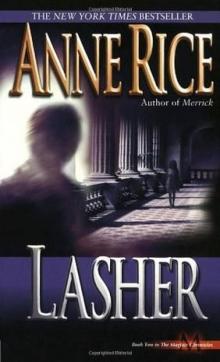 Lasher lotmw-2
Lasher lotmw-2 The Tale of the Body Thief tvc-4
The Tale of the Body Thief tvc-4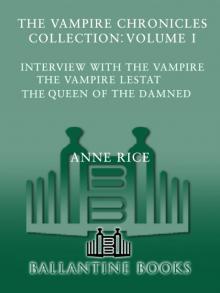 The Vampire Chronicles Collection
The Vampire Chronicles Collection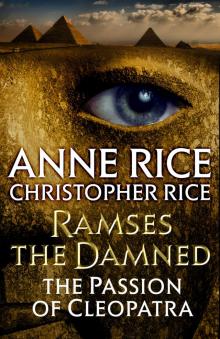 Ramses the Damned
Ramses the Damned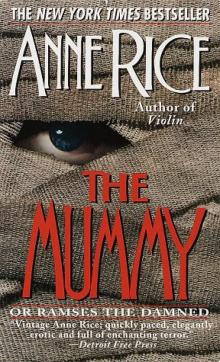 The Mummy - or Ramses the Damned
The Mummy - or Ramses the Damned Vittorio, The Vampire - New Vampires 02
Vittorio, The Vampire - New Vampires 02 The Vampire Armand tvc-6
The Vampire Armand tvc-6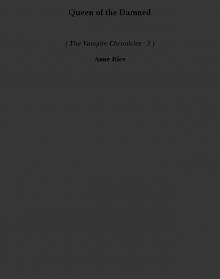 Queen of the Damned tvc-3
Queen of the Damned tvc-3 The witching hour lotmw-1
The witching hour lotmw-1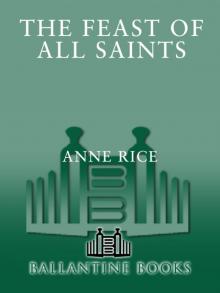 Feast of All Saints
Feast of All Saints Queen of the Damned
Queen of the Damned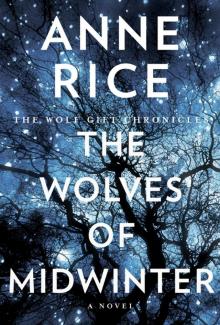 The Wolves of Midwinter twgc-2
The Wolves of Midwinter twgc-2 The Mummy
The Mummy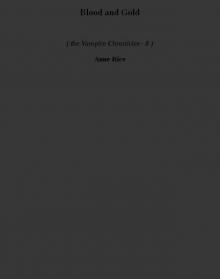 Blood and Gold tvc-8
Blood and Gold tvc-8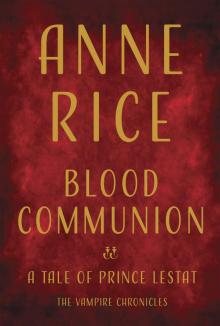 Blood Communion
Blood Communion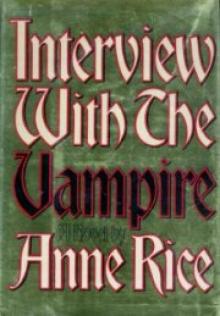 Interview with the Vampire tvc-1
Interview with the Vampire tvc-1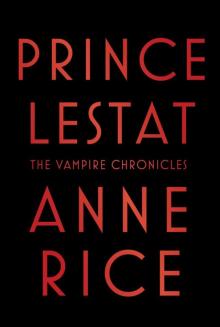 Prince Lestat: The Vampire Chronicles
Prince Lestat: The Vampire Chronicles